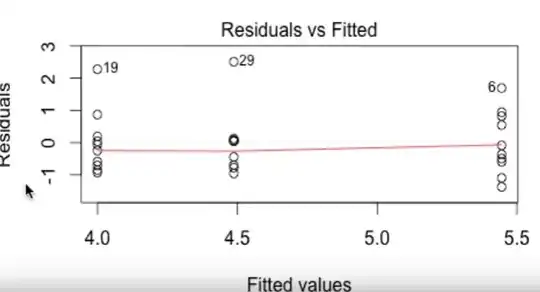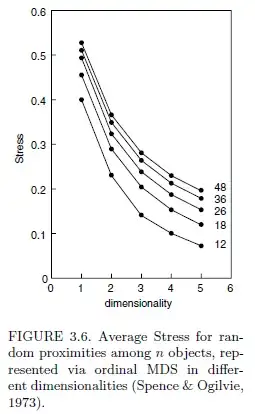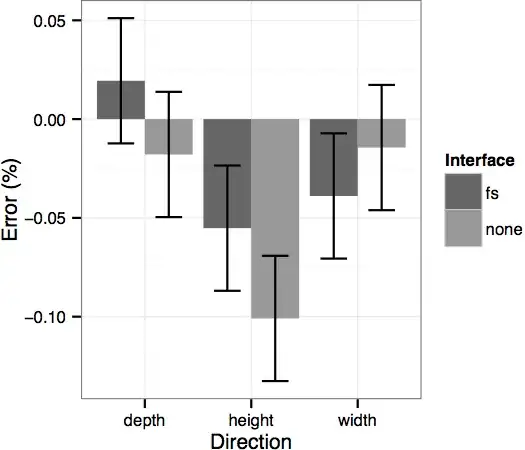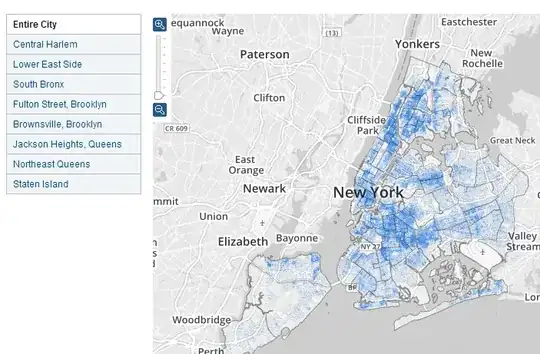I'm just starting out learning about ANOVA, I'm having trouble understanding how to check for homogeneous variance assumptions.
One source I have seems to be looking at box-plots, and another looks at residual vs fitted plot. But I'm not sure what they are looking at exactly.
For example, here is a screenshot from a video on YouTube showing Residual vs Fitted (sorry I could not find the actual dataset used).
The presenter is saying that the overall variance is relatively homogeneous. How can he tell that? Is he looking at the vertical distance between the points in each group?
To me it seems that the first 2 groups from the left have a larger variance than the last group? Those point 19 and 29 are much further from the rest of the points below them.

What about when people use a box plot to check for equal variance?
For example, the box plot below. What am I supposed to be looking at?
Is it the overall size of the box (from Q1 to Q3) or the whole thing including whiskers?
Why can't we just look at the IQR?
What about outliers, do they impact the homogeneous variance assumption?
Would you consider this data to have approximately equal variance based on the box plots?
At this stage I'm really only looking for understanding based on visual inspection. I've read that there are some formal tests for this, but I'm not up to this stage yet.
Thank you


